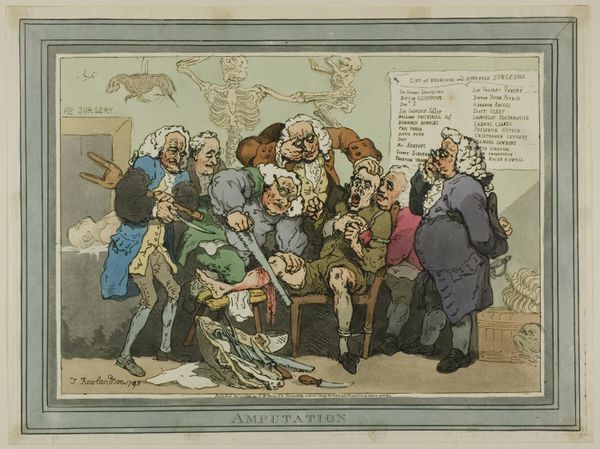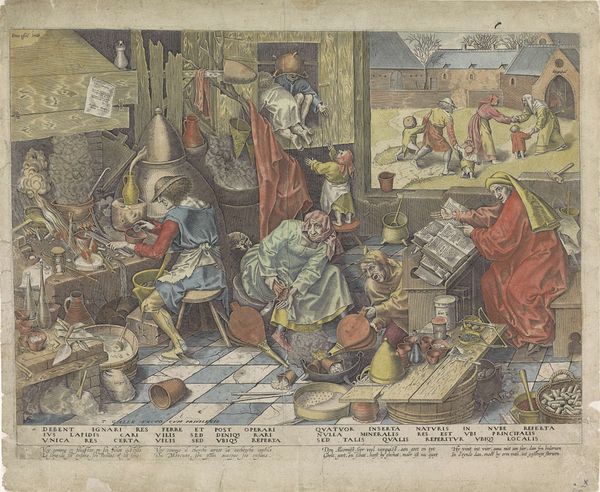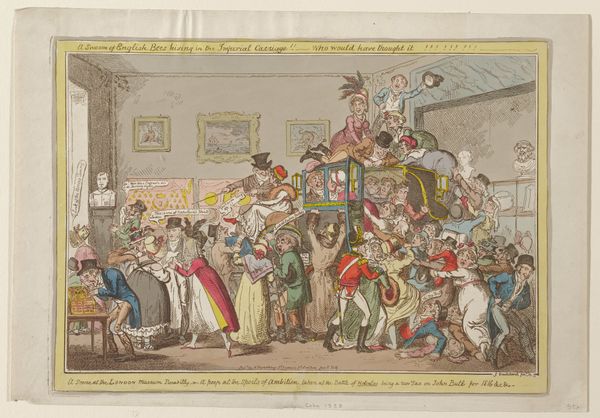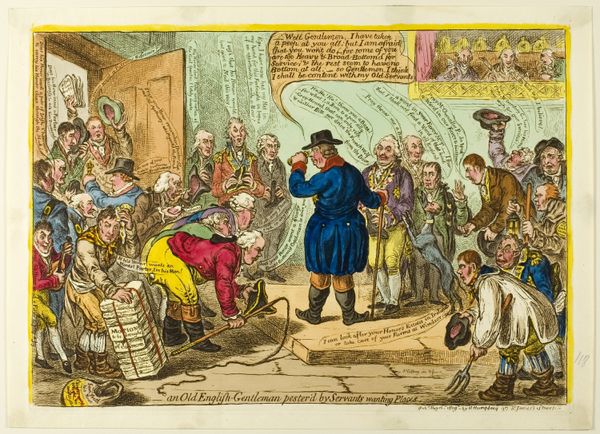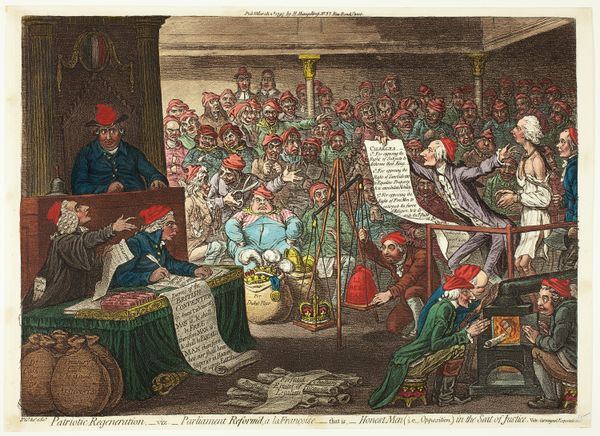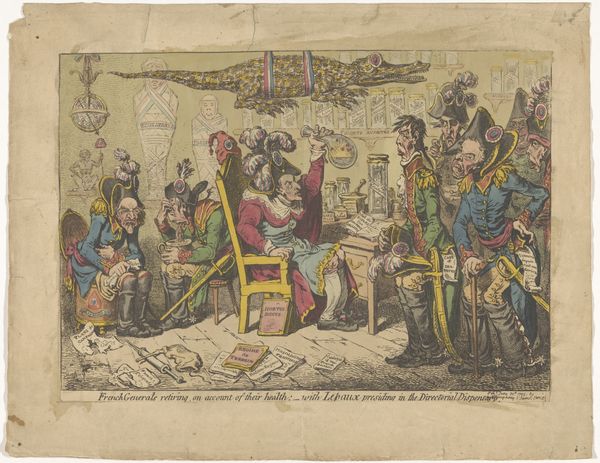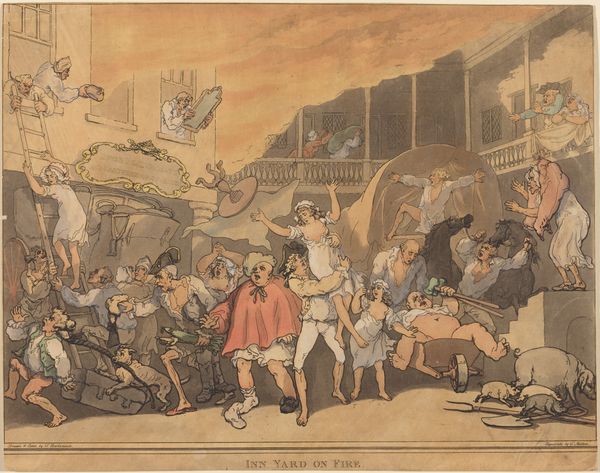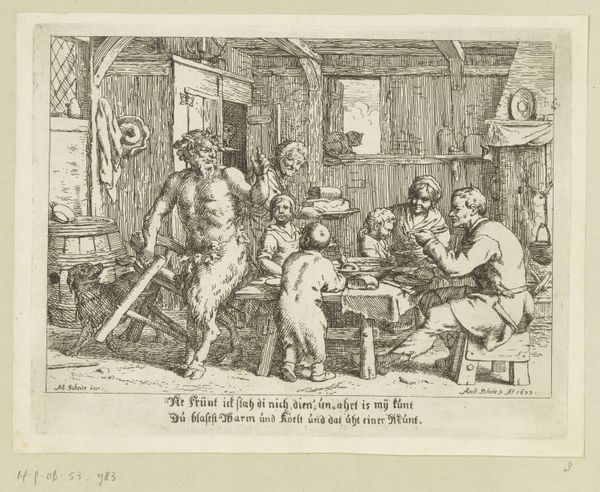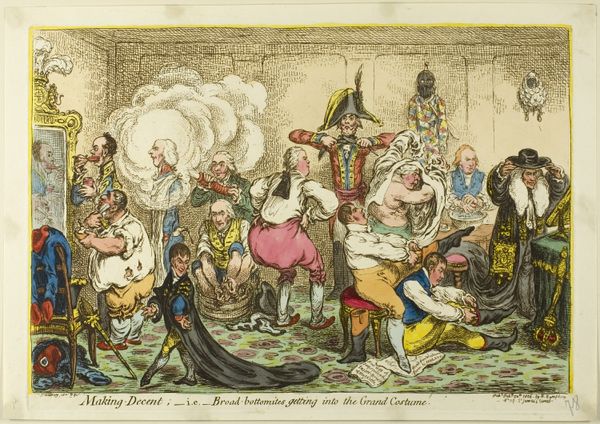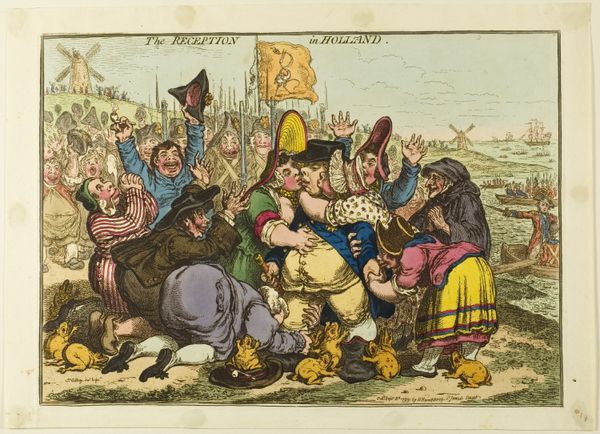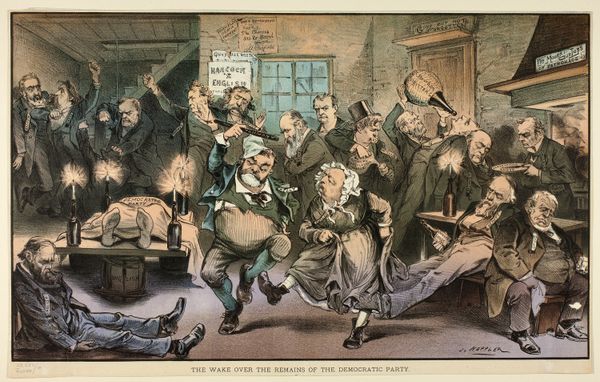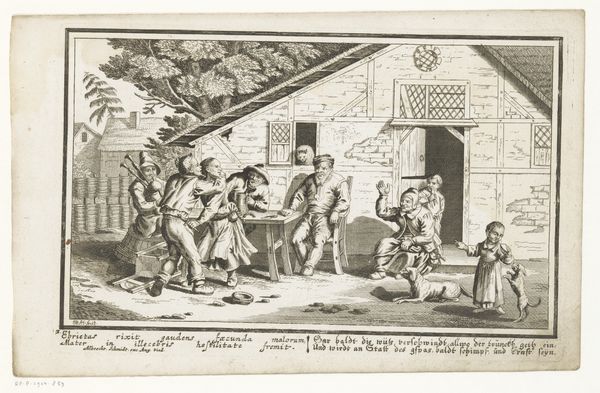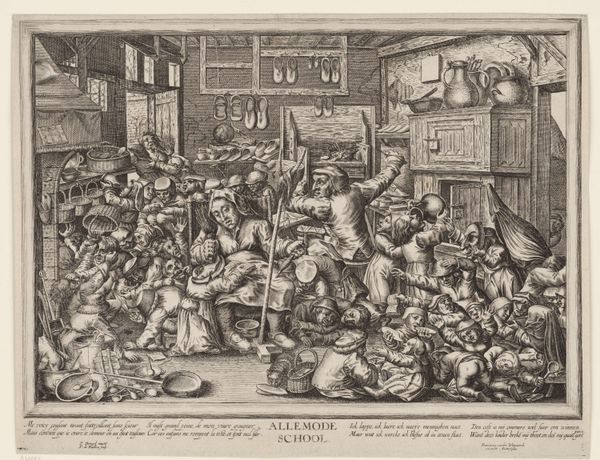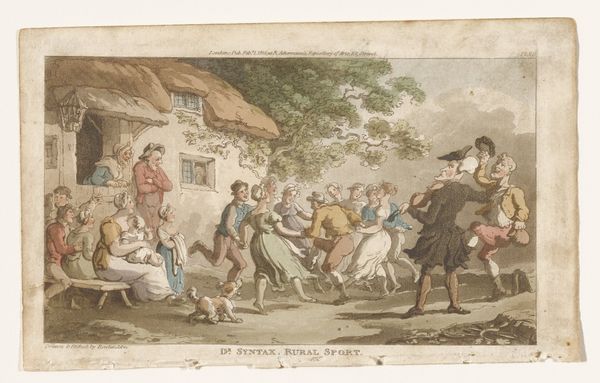
print, engraving
#
narrative-art
#
baroque
# print
#
coloured pencil
#
genre-painting
#
history-painting
#
engraving
Dimensions: height 365 mm, width 481 mm
Copyright: Rijks Museum: Open Domain
Pieter van der Heyden’s “Keisnijder of de heks van Mallegem” was made using engraving, a printmaking technique that relies on the controlled removal of material. The image is created by carefully incising lines into a metal plate. The lines are then filled with ink, and the plate is pressed onto paper, transferring the image. The quality of the final print depends greatly on the engraver's skill, as well as on the paper and ink used, and the pressure applied during printing. Look closely, and you can see how the density and depth of the lines create a range of tones and textures. Van der Heyden's image offers a satirical commentary on society. The print is a commentary on quackery and superstition. It offers a glimpse into the world of early modern medicine, labor, and trade, capturing the spirit of a rapidly changing world. The very act of creating a print implied a wide distribution of images, and this artwork connects with the culture of burgeoning capitalism. It shows the artist’s ability to transform base metal into a matrix for social commentary. It challenges our assumptions about fine art, demonstrating the cultural significance of printmaking as a medium for disseminating ideas and critiques.
Comments
No comments
Be the first to comment and join the conversation on the ultimate creative platform.
